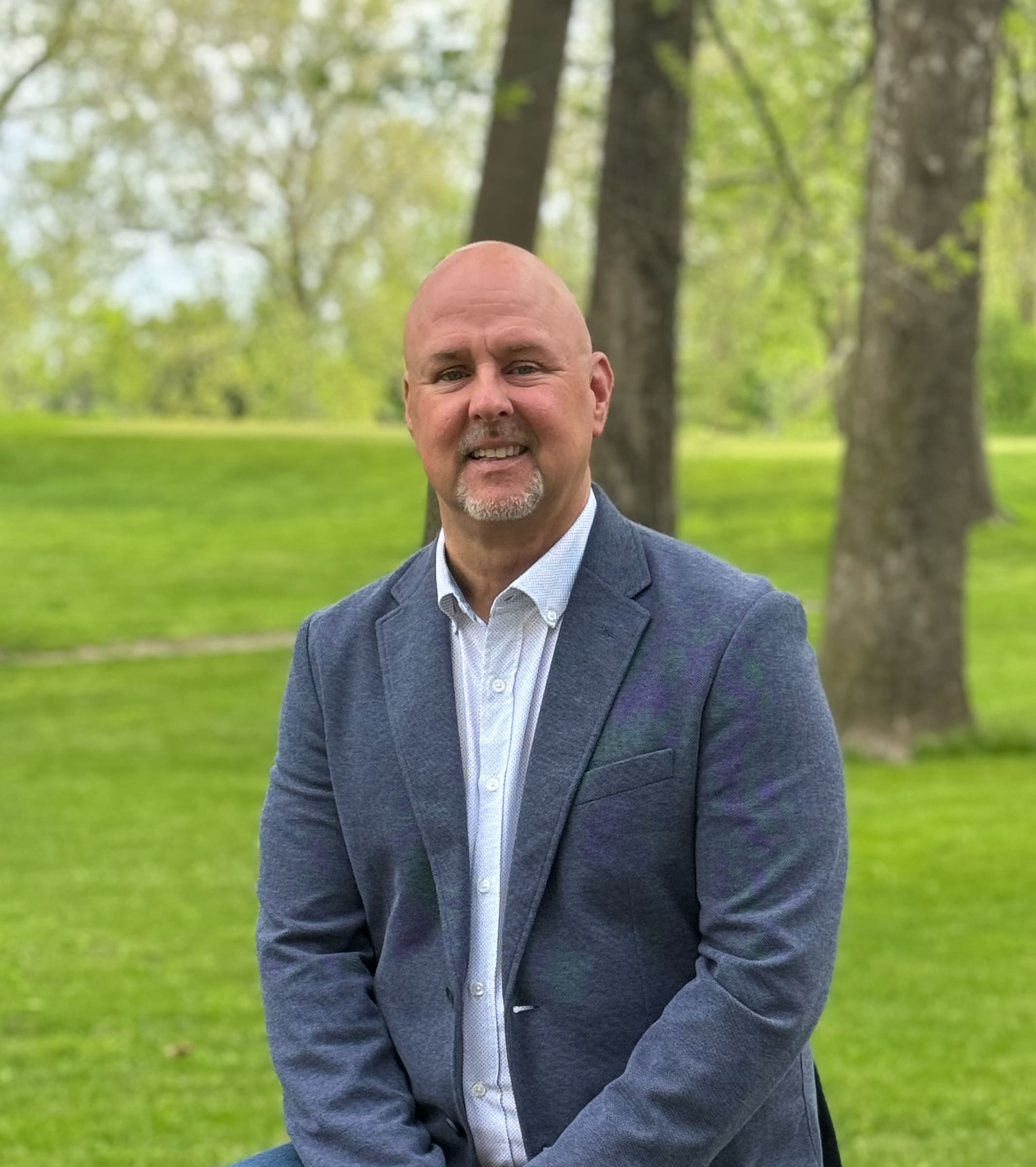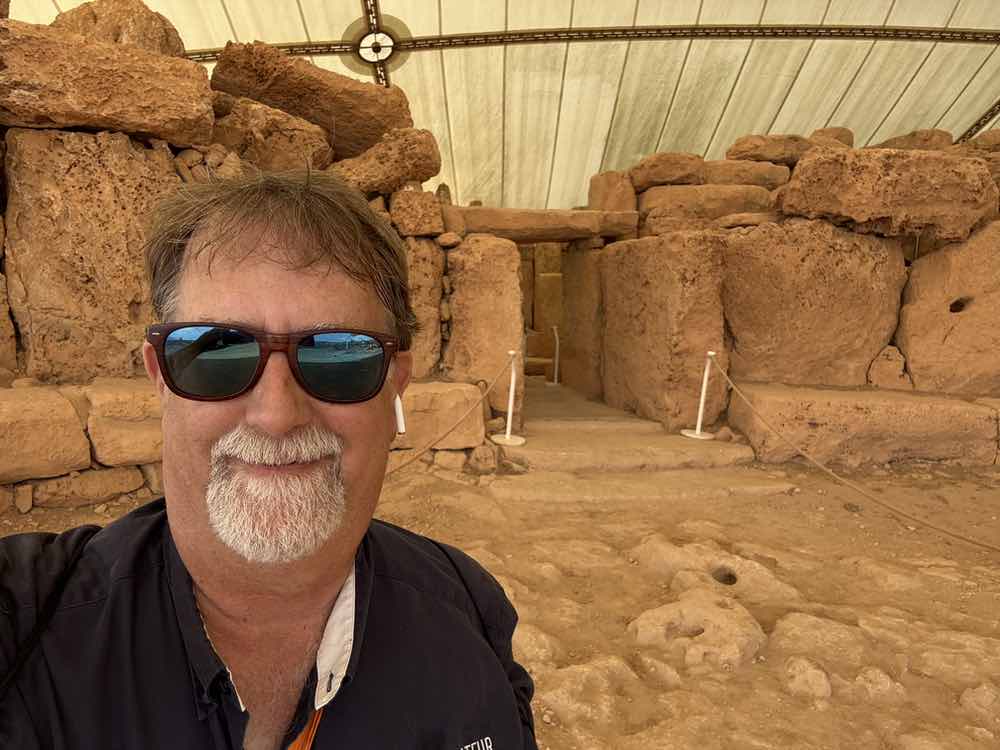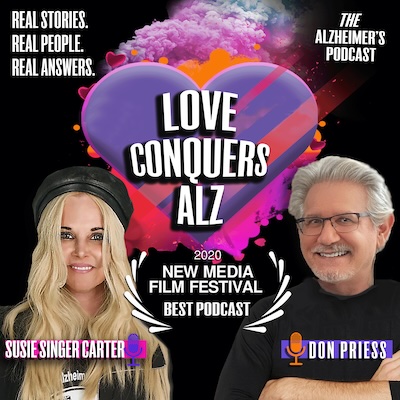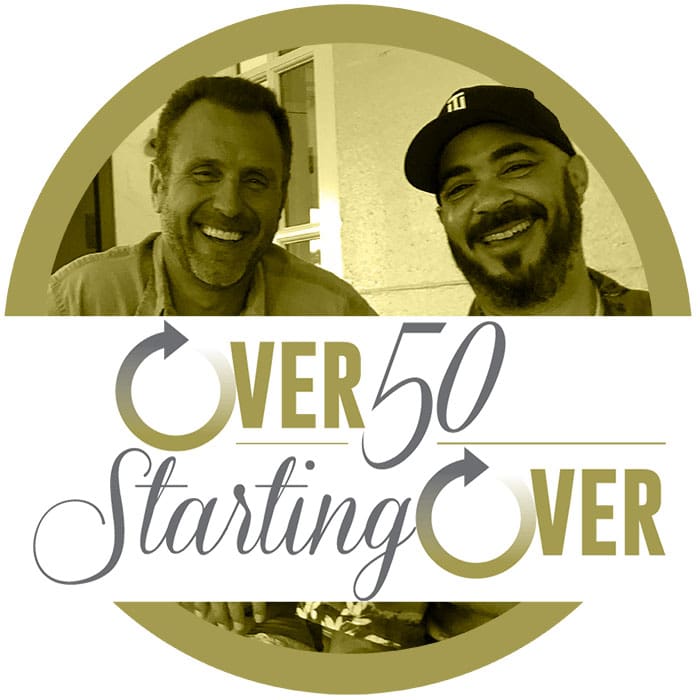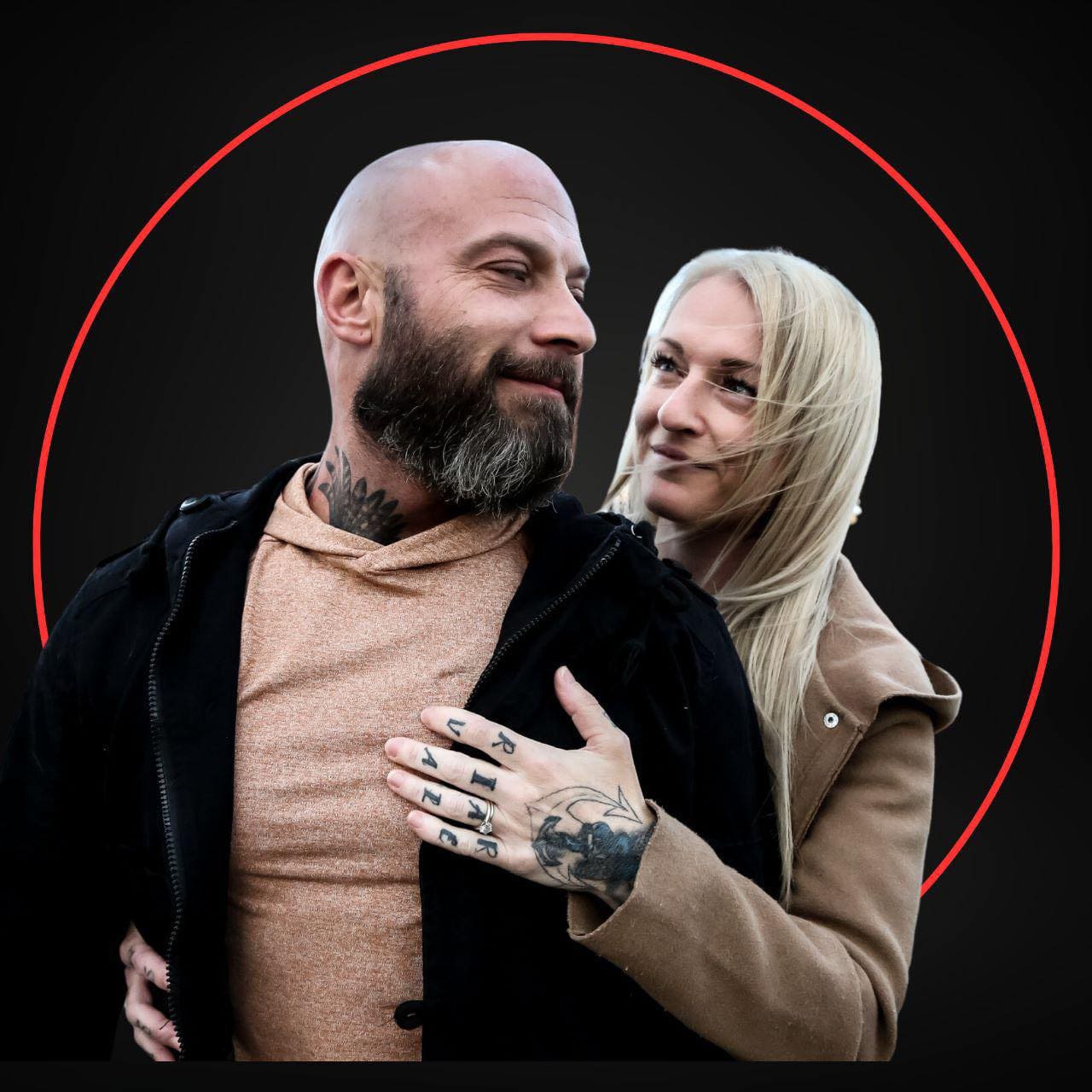Is Patience Really a Virtue?
‘u201cBe Patient?u201d
n
The first time I met Will, I remember thinking, u201cNow here is a guy who looks like a CEO.u201d Will was straight from Central Casting. He was a little older than I was at the time, late forties maybe. He was taller than me, maybe six-one and trim and wore an expensive medium gray small herringbone suit, tailored so you noticed that he worked out. Willu2019s hair was black with just the right amount of silver at the temples. His teeth were toothpaste-ad perfect, bright white and straight, and his jaw muscles looked like he chewed rawhide as a hobby. He had a warm smile, but when his gray -blue eyes locked on yours there seemed to be a chill in the air.
n
Will was the division head for major project Finance at a Money center bank where I conducted leadership training. Participants formed change teams during the training and then presented their progress monthly over the next ninety days.
n
The project finance team missed what they promised at the mid-point. Will exploded.
n
When I lose my temper I turn into a sputtering fool who cannot put a sentence together; Will was one of those people whose verbal acuity sharpens with anger. He eviscerated the team.
n
After the team left I suggested he might be more patient. Will did not take my suggestion well.
n
u201cBE PATIENT?!u00a0 THE WORLD WAS NOT BUILT BY PATIENT PEOPLE!u201d Will bellowed at me red-faced and stormed out.
n
I was still a little rattled when Bob arrived to hear the progress report from his team.
n
u201cI see youu2019ve met Vesuvius,u201du00a0 Bob joked. Evidently Will had a reputation for volcanic eruption. Later I heard his temper derailed him from the CEO track, but I do remember that his team delivered at the next meeting.
n
Reflecting on Patience
n
This week I have been reflecting on patience. As part of my self-publishing journey, I have struggled with impatience as I learned digital user interfaces for publishing and advertising platforms. Iu2019ve been pushing my u2018late adopter beingu2019 to its capacity. So I thought about Willu2019s outburst.
n
I can think of many examples to support his u201cgreat men ainu2019t patientu201d case. Andrew Carnegie and his partner Henry Clay Frick built the Pittsburgh steel industry, but werenu2019t patient men, (just ask the Homestead Works strikers in 1892). Henry Ford, founder of the Ford Motor company and force behind the adoption of the assembly line, was known for many things, but patience wasnu2019t among them. Steve Jobs of Apple, Jeff Bezos of Amazon, Elon Musk of Tesla, have each been called many things, but u201cthe soul-of-patienceu201d not-so-much.
n
There are stories of each of these men losing their tempers. They each set extremely high standards and frequently belittled people who didnu2019t meet them. Could Will have been right?
n
Of course, these business tycoons, offered being part of building something extraordinary in exchange for their impatience. There is some relationship between that vision and others’ acceptance of their angry intolerance of delay or underperformance.
n
Patience and Perseverance or Persistence
n
Contrary to what many people think Thomas Alva Edison did not invent the light bulb. People had been burned filaments-under-glass since the late 1700s.There were several patents for incandescent lights by 1870. Edison may be given cultural credit because he commercialized the light bulb, actually made a profit selling them. He tried many different filaments.
n
In 1879 he hit on carbonized bamboo, which burned with an eerie orange light and lasted for a long time. When I visited his home in Fort Meyers, Florida.in the 1970s the docent told me that the chandeliers with twenty twenty-watt bulbs were u201cinstalled when the house was built almost a hundred years ago, but Mr. Edison went on to experiment with almost three hundred filaments after that.u201d
n
u201cWhy?u201d I blurted out. Others on the tour laughed.
n
u201cThere is no money in a lightbulb that lasts for a hundred years,u201d she smiled. Those same light bulbs still burn today, even if they are only turned on so tour rubes like me can ask u201cWhy?u201d
n
Edison was a press hound. He was always giving interviews. Once in the middle of his perfect filament quest he bragged that he had examined u201cover two hundred different filament materials.u201d
n
u201cWhy donu2019t you give up?u201d The reporter asked.
n
u201cGive up? NO! I now know two hundred ways Not to make a light bulb.u201d
n
Edison was persistent. He persevered and ultimately invented an improved vacuum pump so he could use carbon from a burned metal as a filament. The light bulb has become a universal symbol for an idea, which implies a flash of brilliance. Actually the history of the light bulb is one of many flashes of brilliance followed by endless testing and failure before final success.
n
He was persistent, but was Thomas Edison patient? If you read about his relationship with Nikola Tesla or his battle with George Westinghouse about direct current (DC) versus alternating current (AC), patient might not be the word that comes to mind. Uber-competitive maybe but patient, probably not.
n
Anyone who starts a business, trains for an athletic event, or engages in invention, Innovation, or improvement, knows that gains come from multiple iterations, and patience, persistence, and perseverance are required.
n
Patient Managers? Patient Leaders?
n
Managers get the work done and develop people. That would seem to require patience. How could you educate, train, and create Growth opportunities without patience.
n
Leaders work in abnormal circumstances, war, emergencies, and change. They provide direction and attract followers. These circumstances donu2019t always present opportunities for patience.
n
u00a0u201cOK, ladies and gentlemen there is a fifty foot tsunami approaching and we need to get to higher ground. I know that some of you take longer to process risk than others and we want to allow time for you to become comfortable with action in this situation. Some of you run faster than others and that is totally OK. Take your time and move at your own pace, but if you are both a slow processor and a slow runner, you may have a PROBLEM!u201d
n
In urgent timeline situations leaders might be forgiven for a lack of patience.
n
In most organizations these days the manager who manager the day to day and the leader who leads change are the same person. Perhaps using patience to develop people can build the commitment to follow a leader and make change. Change requires persistence and perseverance and not a small amount of patience.
n
What a manager-leader shouldnu2019t be patient about
n
A while after Willu2019s explosion, but before the next team presentation he and I had a conversation.
n
Will said, u201cThere is just absolutely no way I would ever make a group presentation to my boss where I was telling him for the first that I wasnu2019t meeting a commitment. They should have given me a u2018heads-up.u2019 I mean, Andy, [Willu2019s boss] wasnu2019t in the room, but he could have been. It is the ultimate sign of disrespect.u201d
n
Once again Will had a point. It didnu2019t excuse his anger, his explosion, nor his over-the-top dressing down of the team, and I told him so, but he wasnu2019t wrong about what the team should have done. Some of his impatience was justified.
n
I often talk about three critical elements of trust in business:
n
- n
- Share accurate information in a timely way to those who need it. Protect confidentiality,
- Be as transparent as possible about decision making so people can understand your judgement.
- Do what you say you are going to do, (and if you canu2019t see number 1).
n
n
n
n
So donu2019t be u201cpatientu201d with violations of trust. Constructively confront them as soon as they are known.
n
What a manager-leader should be patient about
n
People are different. People are different from each other. People are different from the boss. They process information differently, learn at different rates, commit to action differently. So as far as possible without hindering business commitments or placing undue hardship on customers, or other team members, be patient with those differences. Help when you are asked to help and can help, patiently.
n
Be patient with yourself.
n
Here is what I am meditating on this week. This is the opposite of Willu2019s issue. Will was too patient with his own flaws. He knew his anger was a problem, but never apologized, and apparently didnu2019t work on it until he was fired a few years after we worked together. He was more patient with himself than he was with others.
n
Many people, not just me, I swear, are much more patient with others than they are with themselves. They cut others a break for being slow learners or failing to change behavior, but constantly beat themselves up for doing those things.
n
So . . . these are words of advice to myself . . . if they work for you too, so much the better:
n
Persist . . . Persevere . . . Donu2019t give up . . . But be aware there is little virtue in beating your head against a brick wall you could easily walk around, between struggling to learn something when you could easily hire someone who already knows how to do it.
n
But if youu2019ve committed to learn something, to do something, to solve some problem, Be Patient. Stop comparing yourself to others, instead compare yourself to your own milestones that you met this week, last week, or last decade. If youu2019re frustrated, step away for a while. Remember Murphyu2019s Law:
n
u201cNothing is as easy as it looks. Everything takes longer than it should. And in every field of endeavor, everything that can go wrong, will go wrong, at the worst possible moment.u201d
n
And, by the way, just knowing about Murphyu2019s Law does NOT mean that it wonu2019t apply.
n
Be Patient.
n
u00a0
n
u00a0
n
u00a0
n
u00a0
n
And please be patient with me as I persistently hawk my book.u00a0 
n
“,”tablet”:”
u201cBe Patient?u201d
n
The first time I met Will, I remember thinking, u201cNow here is a guy who looks like a CEO.u201d Will was straight from Central Casting. He was a little older than I was at the time, late forties maybe. He was taller than me, maybe six-one and trim and wore an expensive medium gray small herringbone suit, tailored so you noticed that he worked out. Willu2019s hair was black with just the right amount of silver at the temples. His teeth were toothpaste-ad perfect, bright white and straight, and his jaw muscles looked like he chewed rawhide as a hobby. He had a warm smile, but when his gray -blue eyes locked on yours there seemed to be a chill in the air.
n
Will was the division head for major project finance at a money center bank where I conducted leadership training. Participants formed change teams during the training and then presented their progress monthly over the next ninety days.
n
The project finance team missed what they promised at the mid-point. Will exploded.
n
When I lose my temper I turn into a sputtering fool who cannot put a sentence together; Will was one of those people whose verbal acuity sharpens with anger. He eviscerated the team.
n
After the team left I suggested he might be more patient. Will did not take my suggestion well.
n
u201cBE PATIENT?! THE WORLD WAS NOT BUILT BY PATIENT PEOPLE!u201d Will bellowed at me red-faced and stormed out.
n
I was still a little rattled when Bob arrived to hear the progress report from his team.
n
u201cI see youu2019ve met Vesuvius,u201d Bob joked. Evidently Will had a reputation for volcanic eruption. Later I heard his temper derailed him from the CEO track, but I do remember that his team delivered at the next meeting.
n
Reflecting on Patience
n
This week I have been reflecting on patience. As part of my self-publishing journey, I have struggled with impatience as I learned digital user interfaces for publishing and advertising platforms. Iu2019ve been pushing my u2018late adopter beingu2019 to its capacity. So I thought about Willu2019s outburst.
n
I can think of many examples to support his u201cgreat men ainu2019t patientu201d case. Andrew Carnegie and his partner Henry Clay Frick built the Pittsburgh steel industry, but werenu2019t patient men, (just ask the Homestead Works strikers in 1892). Henry Ford, founder of the Ford Motor company and force behind the adoption of the assembly line, was known for many things, but patience wasnu2019t among them. Steve Jobs of Apple, Jeff Bezos of Amazon, Elon Musk of Tesla, have each been called many things, but u201cthe soul-of-patienceu201d not-so-much.
n
There are stories of each of these men losing their tempers. They each set extremely high standards and frequently belittled people who didnu2019t meet them. Could Will have been right?
n
Of course, these business tycoons, offered being part of building something extraordinary in exchange for their impatience. There is some relationship between that vision and others’ acceptance of their angry intolerance of delay or underperformance.
n
Patience and Perseverance or Persistence
n
Contrary to what many people think Thomas Alva Edison did not invent the light bulb. People had been burned filaments-under-glass since the late 1700s.There were several patents for incandescent lights by 1870. Edison may be given cultural credit because he commercialized the light bulb, actually made a profit selling them. He tried many different filaments.
n
In 1879 he hit on carbonized bamboo, which burned with an eerie orange light and lasted for a long time. When I visited his home in Fort Meyers, Florida.in the 1970s the docent told me that the chandeliers with twenty twenty-watt bulbs were u201cinstalled when the house was built almost a hundred years ago, but Mr. Edison went on to experiment with almost three hundred filaments after that.u201d
n
u201cWhy?u201d I blurted out. Others on the tour laughed.
n
u201cThere is no money in a lightbulb that lasts for a hundred years,u201d she smiled. Those same light bulbs still burn today, even if they are only turned on so tour rubes like me can ask u201cWhy?u201d
n
Edison was a press hound. He was always giving interviews. Once in the middle of his perfect filament quest he bragged that he had examined u201cover two hundred different filament materials.u201d
n
u201cWhy donu2019t you give up?u201d The reporter asked.
n
u201cGive up? NO! I now know two hundred ways Not to make a light bulb.u201d
n
Edison was persistent. He persevered and ultimately invented an improved vacuum pump so he could use carbon from a burned metal as a filament. The light bulb has become a universal symbol for an idea, which implies a flash of brilliance. Actually the history of the light bulb is one of many flashes of brilliance followed by endless testing and failure before final success.
n
He was persistent, but was Thomas Edison patient? If you read about his relationship with Nikola Tesla or his battle with George Westinghouse about direct current (DC) versus alternating current (AC), patient might not be the word that comes to mind. Uber-competitive maybe but patient, probably not.
n
Anyone who starts a business, trains for an athletic event, or engages in invention, innovation, or improvement, knows that gains come from multiple iterations, and patience, persistence, and perseverance are required.
n
Patient Managers? Patient Leaders?
n
Managers get the work done and develop people. That would seem to require patience. How could you educate, train, and create growth opportunities without patience.
n
Leaders work in abnormal circumstances, war, emergencies, and change. They provide direction and attract followers. These circumstances donu2019t always present opportunities for patience.
n
u201cOK, ladies and gentlemen there is a fifty foot tsunami approaching and we need to get to higher ground. I know that some of you take longer to process risk than others and we want to allow time for you to become comfortable with action in this situation. Some of you run faster than others and that is totally OK. Take your time and move at your own pace, but if you are both a slow processor and a slow runner, you may have a PROBLEM!u201d
n
In urgent timeline situations leaders might be forgiven for a lack of patience.
n
In most organizations these days the manager who manager the day to day and the leader who leads change are the same person. Perhaps using patience to develop people can build the commitment to follow a leader and make change. Change requires persistence and perseverance and not a small amount of patience.
n
What a manager-leader shouldnu2019t be patient about
n
A while after Willu2019s explosion, but before the next team presentation he and I had a conversation.
n
Will said, u201cThere is just absolutely no way I would ever make a group presentation to my boss where I was telling him for the first that I wasnu2019t meeting a commitment. They should have given me a u2018heads-up.u2019 I mean, Andy, [Willu2019s boss] wasnu2019t in the room, but he could have been. It is the ultimate sign of disrespect.u201d
n
Once again Will had a point. It didnu2019t excuse his anger, his explosion, nor his over-the-top dressing down of the team, and I told him so, but he wasnu2019t wrong about what the team should have done. Some of his impatience was justified.
n
I often talk about three critical elements of trust in business:
n
- n
- Share accurate information in a timely way to those who need it. Protect confidentiality,
- Be as transparent as possible about decision making so people can understand your judgement.
- Do what you say you are going to do, (and if you canu2019t see number 1).
n
n
n
n
So donu2019t be u201cpatientu201d with violations of trust. Constructively confront them as soon as they are known.
n
What a manager-leader should be patient about
n
People are different. People are different from each other. People are different from the boss. They process information differently, learn at different rates, commit to action differently. So as far as possible without hindering business commitments or placing undue hardship on customers, or other team members, be patient with those differences. Help when you are asked to help and can help, patiently.
n
Be patient with yourself.
n
Here is what I am meditating on this week. This is the opposite of Willu2019s issue. Will was too patient with his own flaws. He knew his anger was a problem, but never apologized, and apparently didnu2019t work on it until he was fired a few years after we worked together. He was more patient with himself than he was with others.
n
Many people, not just me, I swear, are much more patient with others than they are with themselves. They cut others a break for being slow learners or failing to change behavior, but constantly beat themselves up for doing those things.
n
So . . . these are words of advice to myself . . . if they work for you too, so much the better:
n
Persist . . . Persevere . . . Donu2019t give up . . . But be aware there is little virtue in beating your head against a brick wall you could easily walk around, between struggling to learn something when you could easily hire someone who already knows how to do it.
n
But if youu2019ve committed to learn something, to do something, to solve some problem, Be Patient. Stop comparing yourself to others, instead compare yourself to your own milestones that you met this week, last week, or last decade. If youu2019re frustrated, step away for a while. Remember Murphyu2019s Law:
n
u201cNothing is as easy as it looks. Everything takes longer than it should. And in every field of endeavor, everything that can go wrong, will go wrong, at the worst possible moment.u201d
n
And, by the way, just knowing about Murphyu2019s Law does NOT mean that it wonu2019t apply.
n
Be Patient.
n
n
n
n
n
And please be patient with me as I persistently hawk my book. 
“,”phone”:”
n
u201cBe Patient?u201d
n
The first time I met Will, I remember thinking, u201cNow here is a guy who looks like a CEO.u201d Will was straight from Central Casting. He was a little older than I was at the time, late forties maybe. He was taller than me, maybe six-one and trim and wore an expensive medium gray small herringbone suit, tailored so you noticed that he worked out. Willu2019s hair was black with just the right amount of silver at the temples. His teeth were toothpaste-ad perfect, bright white and straight, and his jaw muscles looked like he chewed rawhide as a hobby. He had a warm smile, but when his gray -blue eyes locked on yours there seemed to be a chill in the air.
n
Will was the division head for major project finance at a money center bank where I conducted leadership training. Participants formed change teams during the training and then presented their progress monthly over the next ninety days.
n
The project finance team missed what they promised at the mid-point. Will exploded.
n
When I lose my temper I turn into a sputtering fool who cannot put a sentence together; Will was one of those people whose verbal acuity sharpens with anger. He eviscerated the team.
n
After the team left I suggested he might be more patient. Will did not take my suggestion well.
n
u201cBE PATIENT?! THE WORLD WAS NOT BUILT BY PATIENT PEOPLE!u201d Will bellowed at me red-faced and stormed out.
n
I was still a little rattled when Bob arrived to hear the progress report from his team.
n
u201cI see youu2019ve met Vesuvius,u201d Bob joked. Evidently Will had a reputation for volcanic eruption. Later I heard his temper derailed him from the CEO track, but I do remember that his team delivered at the next meeting.
n
Reflecting on Patience
n
This week I have been reflecting on patience. As part of my self-publishing journey, I have struggled with impatience as I learned digital user interfaces for publishing and advertising platforms. Iu2019ve been pushing my u2018late adopter beingu2019 to its capacity. So I thought about Willu2019s outburst.
n
I can think of many examples to support his u201cgreat men ainu2019t patientu201d case. Andrew Carnegie and his partner Henry Clay Frick built the Pittsburgh steel industry, but werenu2019t patient men, (just ask the Homestead Works strikers in 1892). Henry Ford, founder of the Ford Motor company and force behind the adoption of the assembly line, was known for many things, but patience wasnu2019t among them. Steve Jobs of Apple, Jeff Bezos of Amazon, Elon Musk of Tesla, have each been called many things, but u201cthe soul-of-patienceu201d not-so-much.
n
There are stories of each of these men losing their tempers. They each set extremely high standards and frequently belittled people who didnu2019t meet them. Could Will have been right?
n
Of course, these business tycoons, offered being part of building something extraordinary in exchange for their impatience. There is some relationship between that vision and others’ acceptance of their angry intolerance of delay or underperformance.
n
Patience and Perseverance or Persistence
n
Contrary to what many people think Thomas Alva Edison did not invent the light bulb. People had been burned filaments-under-glass since the late 1700s.There were several patents for incandescent lights by 1870. Edison may be given cultural credit because he commercialized the light bulb, actually made a profit selling them. He tried many different filaments.
n
In 1879 he hit on carbonized bamboo, which burned with an eerie orange light and lasted for a long time. When I visited his home in Fort Meyers, Florida.in the 1970s the docent told me that the chandeliers with twenty twenty-watt bulbs were u201cinstalled when the house was built almost a hundred years ago, but Mr. Edison went on to experiment with almost three hundred filaments after that.u201d
n
u201cWhy?u201d I blurted out. Others on the tour laughed.
n
u201cThere is no money in a lightbulb that lasts for a hundred years,u201d she smiled. Those same light bulbs still burn today, even if they are only turned on so tour rubes like me can ask u201cWhy?u201d
n
Edison was a press hound. He was always giving interviews. Once in the middle of his perfect filament quest he bragged that he had examined u201cover two hundred different filament materials.u201d
n
u201cWhy donu2019t you give up?u201d The reporter asked.
n
u201cGive up? NO! I now know two hundred ways Not to make a light bulb.u201d
n
Edison was persistent. He persevered and ultimately invented an improved vacuum pump so he could use carbon from a burned metal as a filament. The light bulb has become a universal symbol for an idea, which implies a flash of brilliance. Actually the history of the light bulb is one of many flashes of brilliance followed by endless testing and failure before final success.
n
He was persistent, but was Thomas Edison patient? If you read about his relationship with Nikola Tesla or his battle with George Westinghouse about direct current (DC) versus alternating current (AC), patient might not be the word that comes to mind. Uber-competitive maybe but patient, probably not.
n
Anyone who starts a business, trains for an athletic event, or engages in invention, innovation, or improvement, knows that gains come from multiple iterations, and patience, persistence, and perseverance are required.
n
Patient Managers? Patient Leaders?
n
Managers get the work done and develop people. That would seem to require patience. How could you educate, train, and create growth opportunities without patience.
n
Leaders work in abnormal circumstances, war, emergencies, and change. They provide direction and attract followers. These circumstances donu2019t always present opportunities for patience.
n
u201cOK, ladies and gentlemen there is a fifty foot tsunami approaching and we need to get to higher ground. I know that some of you take longer to process risk than others and we want to allow time for you to become comfortable with action in this situation. Some of you run faster than others and that is totally OK. Take your time and move at your own pace, but if you are both a slow processor and a slow runner, you may have a PROBLEM!u201d
n
In urgent timeline situations leaders might be forgiven for a lack of patience.
n
In most organizations these days the manager who manager the day to day and the leader who leads change are the same person. Perhaps using patience to develop people can build the commitment to follow a leader and make change. Change requires persistence and perseverance and not a small amount of patience.
n
What a manager-leader shouldnu2019t be patient about
n
A while after Willu2019s explosion, but before the next team presentation he and I had a conversation.
n
Will said, u201cThere is just absolutely no way I would ever make a group presentation to my boss where I was telling him for the first that I wasnu2019t meeting a commitment. They should have given me a u2018heads-up.u2019 I mean, Andy, [Willu2019s boss] wasnu2019t in the room, but he could have been. It is the ultimate sign of disrespect.u201d
n
Once again Will had a point. It didnu2019t excuse his anger, his explosion, nor his over-the-top dressing down of the team, and I told him so, but he wasnu2019t wrong about what the team should have done. Some of his impatience was justified.
n
I often talk about three critical elements of trust in business:
n
- n
- Share accurate information in a timely way to those who need it. Protect confidentiality,
- Be as transparent as possible about decision making so people can understand your judgement.
- Do what you say you are going to do, (and if you canu2019t see number 1).
n
n
n
n
So donu2019t be u201cpatientu201d with violations of trust. Constructively confront them as soon as they are known.
n
What a manager-leader should be patient about
n
People are different. People are different from each other. People are different from the boss. They process information differently, learn at different rates, commit to action differently. So as far as possible without hindering business commitments or placing undue hardship on customers, or other team members, be patient with those differences. Help when you are asked to help and can help, patiently.
n
Be patient with yourself.
n
Here is what I am meditating on this week. This is the opposite of Willu2019s issue. Will was too patient with his own flaws. He knew his anger was a problem, but never apologized, and apparently didnu2019t work on it until he was fired a few years after we worked together. He was more patient with himself than he was with others.
n
Many people, not just me, I swear, are much more patient with others than they are with themselves. They cut others a break for being slow learners or failing to change behavior, but constantly beat themselves up for doing those things.
n
So . . . these are words of advice to myself . . . if they work for you too, so much the better:
n
Persist . . . Persevere . . . Donu2019t give up . . . But be aware there is little virtue in beating your head against a brick wall you could easily walk around, between struggling to learn something when you could easily hire someone who already knows how to do it.
n
But if youu2019ve committed to learn something, to do something, to solve some problem, Be Patient. Stop comparing yourself to others, instead compare yourself to your own milestones that you met this week, last week, or last decade. If youu2019re frustrated, step away for a while. Remember Murphyu2019s Law:
n
u201cNothing is as easy as it looks. Everything takes longer than it should. And in every field of endeavor, everything that can go wrong, will go wrong, at the worst possible moment.u201d
n
And, by the way, just knowing about Murphyu2019s Law does NOT mean that it wonu2019t apply.
n
Be Patient.
n
n
n
n
n
And please be patient with me as I persistently hawk my book. 
n
“}},”slug”:”et_pb_text”}” data-et-multi-view-load-tablet-hidden=”true” data-et-multi-view-load-phone-hidden=”true”>
‘“Be Patient?”
The first time I met Will, I remember thinking, “Now here is a guy who looks like a CEO.” Will was straight from Central Casting. He was a little older than I was at the time, late forties maybe. He was taller than me, maybe six-one and trim and wore an expensive medium gray small herringbone suit, tailored so you noticed that he worked out. Will’s hair was black with just the right amount of silver at the temples. His teeth were toothpaste-ad perfect, bright white and straight, and his jaw muscles looked like he chewed rawhide as a hobby. He had a warm smile, but when his gray -blue eyes locked on yours there seemed to be a chill in the air.
Will was the division head for major project finance at a money center bank where I conducted leadership training. Participants formed change teams during the training and then presented their progress monthly over the next ninety days.
The project finance team missed what they promised at the mid-point. Will exploded.
When I lose my temper I turn into a sputtering fool who cannot put a sentence together; Will was one of those people whose verbal acuity sharpens with anger. He eviscerated the team.
After the team left I suggested he might be more patient. Will did not take my suggestion well.
“BE PATIENT?! THE WORLD WAS NOT BUILT BY PATIENT PEOPLE!” Will bellowed at me red-faced and stormed out.
I was still a little rattled when Bob arrived to hear the progress report from his team.
“I see you’ve met Vesuvius,” Bob joked. Evidently Will had a reputation for volcanic eruption. Later I heard his temper derailed him from the CEO track, but I do remember that his team delivered at the next meeting.
Reflecting on Patience
This week I have been reflecting on patience. As part of my self-publishing journey, I have struggled with impatience as I learned digital user interfaces for publishing and advertising platforms. I’ve been pushing my ‘late adopter being’ to its capacity. So I thought about Will’s outburst.
I can think of many examples to support his “great men ain’t patient” case. Andrew Carnegie and his partner Henry Clay Frick built the Pittsburgh steel industry, but weren’t patient men, (just ask the Homestead Works strikers in 1892). Henry Ford, founder of the Ford Motor company and force behind the adoption of the assembly line, was known for many things, but patience wasn’t among them. Steve Jobs of Apple, Jeff Bezos of Amazon, Elon Musk of Tesla, have each been called many things, but “the soul-of-patience” not-so-much.
There are stories of each of these men losing their tempers. They each set extremely high standards and frequently belittled people who didn’t meet them. Could Will have been right?
Of course, these business tycoons, offered being part of building something extraordinary in exchange for their impatience. There is some relationship between that vision and others’ acceptance of their angry intolerance of delay or underperformance.
Patience and Perseverance or Persistence
Contrary to what many people think Thomas Alva Edison did not invent the light bulb. People had been burned filaments-under-glass since the late 1700s.There were several patents for incandescent lights by 1870. Edison may be given cultural credit because he commercialized the light bulb, actually made a profit selling them. He tried many different filaments.
In 1879 he hit on carbonized bamboo, which burned with an eerie orange light and lasted for a long time. When I visited his home in Fort Meyers, Florida.in the 1970s the docent told me that the chandeliers with twenty twenty-watt bulbs were “installed when the house was built almost a hundred years ago, but Mr. Edison went on to experiment with almost three hundred filaments after that.”
“Why?” I blurted out. Others on the tour laughed.
“There is no money in a lightbulb that lasts for a hundred years,” she smiled. Those same light bulbs still burn today, even if they are only turned on so tour rubes like me can ask “Why?”
Edison was a press hound. He was always giving interviews. Once in the middle of his perfect filament quest he bragged that he had examined “over two hundred different filament materials.”
“Why don’t you give up?” The reporter asked.
“Give up? NO! I now know two hundred ways Not to make a light bulb.”
Edison was persistent. He persevered and ultimately invented an improved vacuum pump so he could use carbon from a burned metal as a filament. The light bulb has become a universal symbol for an idea, which implies a flash of brilliance. Actually the history of the light bulb is one of many flashes of brilliance followed by endless testing and failure before final success.
He was persistent, but was Thomas Edison patient? If you read about his relationship with Nikola Tesla or his battle with George Westinghouse about direct current (DC) versus alternating current (AC), patient might not be the word that comes to mind. Uber-competitive maybe but patient, probably not.
Anyone who starts a business, trains for an athletic event, or engages in invention, innovation, or improvement, knows that gains come from multiple iterations, and patience, persistence, and perseverance are required.
Patient Managers? Patient Leaders?
Managers get the work done and develop people. That would seem to require patience. How could you educate, train, and create growth opportunities without patience.
Leaders work in abnormal circumstances, war, emergencies, and change. They provide direction and attract followers. These circumstances don’t always present opportunities for patience.
“OK, ladies and gentlemen there is a fifty foot tsunami approaching and we need to get to higher ground. I know that some of you take longer to process risk than others and we want to allow time for you to become comfortable with action in this situation. Some of you run faster than others and that is totally OK. Take your time and move at your own pace, but if you are both a slow processor and a slow runner, you may have a PROBLEM!”
In urgent timeline situations leaders might be forgiven for a lack of patience.
In most organizations these days the manager who manager the day to day and the leader who leads change are the same person. Perhaps using patience to develop people can build the commitment to follow a leader and make change. Change requires persistence and perseverance and not a small amount of patience.
What a manager-leader shouldn’t be patient about
A while after Will’s explosion, but before the next team presentation he and I had a conversation.
Will said, “There is just absolutely no way I would ever make a group presentation to my boss where I was telling him for the first that I wasn’t meeting a commitment. They should have given me a ‘heads-up.’ I mean, Andy, [Will’s boss] wasn’t in the room, but he could have been. It is the ultimate sign of disrespect.”
Once again Will had a point. It didn’t excuse his anger, his explosion, nor his over-the-top dressing down of the team, and I told him so, but he wasn’t wrong about what the team should have done. Some of his impatience was justified.
I often talk about three critical elements of trust in business:
- Share accurate information in a timely way to those who need it. Protect confidentiality,
- Be as transparent as possible about decision making so people can understand your judgement.
- Do what you say you are going to do, (and if you can’t see number 1).
So don’t be “patient” with violations of trust. Constructively confront them as soon as they are known.
What a manager-leader should be patient about
People are different. People are different from each other. People are different from the boss. They process information differently, learn at different rates, commit to action differently. So as far as possible without hindering business commitments or placing undue hardship on customers, or other team members, be patient with those differences. Help when you are asked to help and can help, patiently.
Be patient with yourself.
Here is what I am meditating on this week. This is the opposite of Will’s issue. Will was too patient with his own flaws. He knew his anger was a problem, but never apologized, and apparently didn’t work on it until he was fired a few years after we worked together. He was more patient with himself than he was with others.
Many people, not just me, I swear, are much more patient with others than they are with themselves. They cut others a break for being slow learners or failing to change behavior, but constantly beat themselves up for doing those things.
So . . . these are words of advice to myself . . . if they work for you too, so much the better:
Persist . . . Persevere . . . Don’t give up . . . But be aware there is little virtue in beating your head against a brick wall you could easily walk around, between struggling to learn something when you could easily hire someone who already knows how to do it.
But if you’ve committed to learn something, to do something, to solve some problem, Be Patient. Stop comparing yourself to others, instead compare yourself to your own milestones that you met this week, last week, or last decade. If you’re frustrated, step away for a while. Remember Murphy’s Law:
“Nothing is as easy as it looks. Everything takes longer than it should. And in every field of endeavor, everything that can go wrong, will go wrong, at the worst possible moment.”
And, by the way, just knowing about Murphy’s Law does NOT mean that it won’t apply.
Be Patient.
And please be patient with me as I persistently hawk my book. 
The post Is Patience Really a Virtue? appeared first on Wisdom from Unusual Places.
Originally Published on https://wisdomfromunusualplaces.com/blog/



